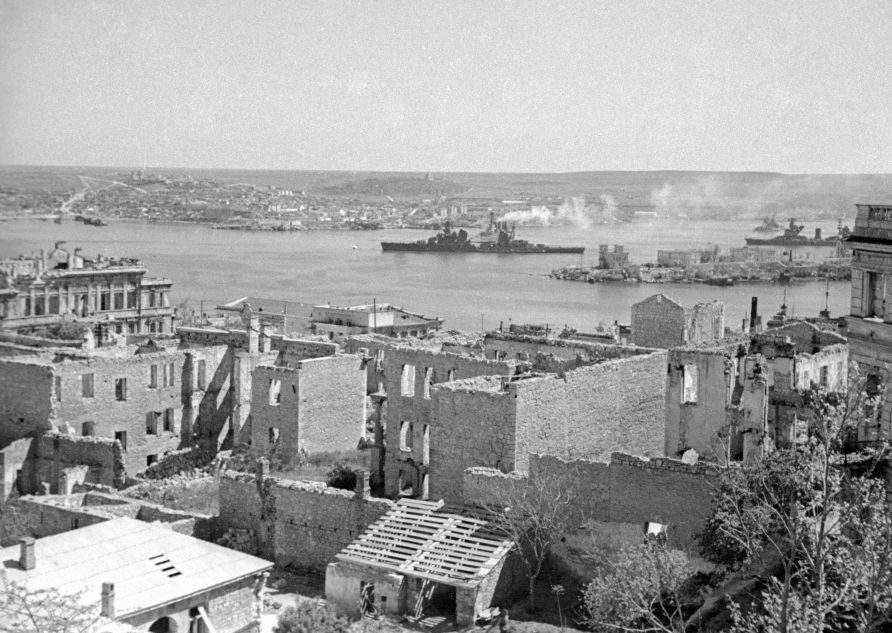On 30 April 1946, the Council of Ministers of the RSFSR approved by resolution N 293 the general design for Sevastopol that had been developed by the architectural studio of the USSR’s Ministry of the Armed Forces under the leadership of Professor Boris Barkhin. According to the general plan, "Sevastopol is being restored as the main naval base of the Black Sea Fleet (closed city)".
During the Crimean War of 1853-1856, the city was completely demolished. In 1867, Mark Twain visited it and wrote: "Pompeii has been preserved better than Sevastopol.”
During the Great Patriotic War, Sevastopol was almost completely destroyed for a second time. Of the 120,000 civilians living there at the start of the conflict, only 3,000 remained by the day Sevastopol was liberated on 9 May 1944.
The decree demanded that the restoration of Sevastopol be accelerated to create a "first-class naval fortress", and within 15 years of the end of the war, the city and naval base were completely rebuilt.
Source: Tatiana Bogatkevich “Activities of state bodies to strengthen and develop the main naval base of the Black Sea Fleet - the city of Sevastopol in 1963-1991” // Information humanitarian portal “Knowledge. Understanding. Skill". - 2010. - № 6 - History.
























